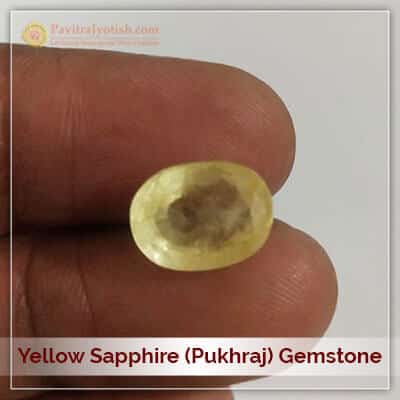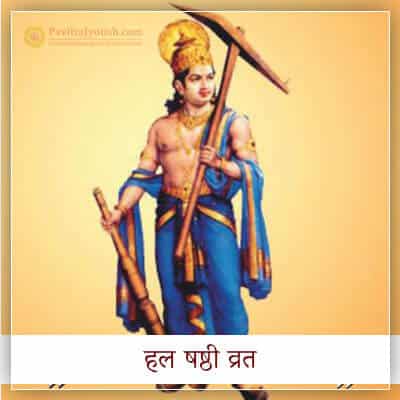Vat Savitri Vrat
Published On : June 29, 2022 | Author : Astrologer Pt Umesh Chandra Pant 
Vat Savitri Vrat
This vrat is the most sanctimonious step representing Indian women as self-resolute and the ambition to assimilate the virtue of their dignity. This festival is celebrated in great jubilation in every year on Purnima of Jyeshtha Shukla. It is considered one of the most idealistic fasts for bestowing prosperity upon the lives of humans. Women, observing the fast, pray to God about the longevity of their husbands. By the way, the date of this festival is a divisive subject. According to Bhavishya and Skanda Purana, the mandated date to observe this festival is Jyeshtha Shukla Purnima. On the other hand, different beliefs opine that the festival should be observed on Amavasya of Jyeshta month. Some learned individuals opine that this is a 3-days-long festival and vrat to be observed on Trayodashi of Jyeshtha Shukla to Shukla Purnima. Women, especially, celebrate this vrat. Effectual results come to the devotees if the vrat is observed religiously. The name, Vat Savitri, is the nickname of this festival, considering its connection with banyan tree, which is worshipped by deity, Savitri. This vrat exists since time immemorial without being changed from its traditional root. The essence of this vrat is connected with human values. Women devotees celebrate this vrat enthusiastically in order to protect their husbands with divine blessings.
Vat Savitri Vrat As A Symbol Of Good Luck For Women
The story about Vat Savitri is associated with the long life of the husbands of women folks. They celebrate it enthusiastically and devotionally and consider this festival as a symbol of their husband’s longevity. They observe this fast reverently every year in order to fulfill their ambition of attaining prosperity and propitiousness. After having finished their daily routines like attending washroom etc. they pick a stock of essential things for Puja and walk down to a banyan tree to worship the deity Savitri for prosperity and wellbeing of their husbands. Worship is conducted by married women pepped up in 16 different adornments and perform the Puja of prosperity-giver deity, Vat Savitri.
Vat Savitri Vrat, Giver of Progeny
The Vat Savitri vrat not only grants fulfillment of married women’s prosperity and wellbeing of their husbands, on the other hand; it also blesses the childness couples with progeny. Being associated with Purnima is the reason why this vrat/fasting is related to Lord Vishnu. And Purnima is considered the most auspicious day to worship Lord Vishnu. Devotees of Lord Vishnu view this day (Purnima) as a very important occasion. This vrat gives effectual results because of its connection with Lord Vishnu. During Purnima (full moon), while the moon beams in its mightiest illuminations, on the other hand, the devotees of Shri Hari gain His absolute blessings during this day. This is why, the vrat is observed during Purnima Tithi, which materializes the goal of women in the attainment of progeny. No change is noticeable in the goal of this festival, despite differences in tithi and beliefs. The goals here are crystal clear; attainment of prosperity, good luck, progeny and its protection.
Importance Of Vat Savitri Vrat
Just as banyan tree holds special significance in Vat Savitri Vrat, similarly, deity Savitri associated with it, is equally important. In our religious manuscripts, both Peepal (Sacred Fig) and banyan are special trees held in deep regards. Just as Peepal is believed to the dwelling place of Trident Lords, similarly, banyan is also believed to be the dwelling abode of Trident Lords. The Trident Lords; Brahman, Vishnu, and Mahesh dwell in these trees (Sacred Fig, and Banyan). Therefore, mediation & Puja and Prayer observed under the trees, gets devotees results manifold. Banyan tree, as famous worldwide for its enormous size, is also worshipable because of its longevity. This tree holds its importance from the standpoint of science as well. While it remains green and full of life, everlastingly, on the other hand, during Jyeshtha, it provides shades not only to humans but also to animals and birds from the sweltering heat in the time of summer. The fruits of the tree serve as foods to quench the hungry animals. And it also equips several types of effective herbals. Behind these religious doctrines also lies the message of conservation of forest and trees.
Vat Savitri Vrat, The Protector Of The Husbands of The Married Women
Besides the religious beliefs behind Vat Savitri vrat, it has also its many philosophical significance. Lord Gautam Buddha attained Enlightenment under banyan tree. Similarly, deity Savitri succeeded in saving her husband’s life near banyan tree. These are the incidents creating ceaseless devotions among the people to worship banyan tree. This festival, as a Vat Savitri Vrat, is still popular by its current name as it was since its first time coming into practice. Married womenfolk revere this vrat with compliance to all its all rituals. In other words, during Vrat Savitri Vrat, the chief god is banyan tree, to which the idol of deity Savitri is ensconced along with seven types of corns. After invoking banyan tree and bathing, things offered to it are clothes, paste of sandalwood, roli, akshata and flowers. Devotees lit up incense sticks, diyas, offer fruits and then wrap raw threats around the bark of the banyan tree. Offering prasad made by jaggery and chickpeas, which is distributed among people. The reason Vat Savitri vrat is famous in Hindu religion among married women is because the festival protects their husbands. There are different types of fast being observed by womenfolk for their prosperity and protection of their husbands, Vat Savitri is one such festival among them. Because, maintaining staunch fidelity with her husband as a duty-bound wife, deity Savitri, in this very day, took up the gauntlet in order to protect the life of her husband, Satywan, from the clutch of God, Yamraj.
Stories of Vat Savitri
The pervasive reputation of Vat Savitri vrat exists because of its significance in the lore of deity Savitri who protected the life of her husband, as well as importance of worshiping banyan tree. This is to glorify our Indian cultures, considering the exemplary depiction of underlying message, like guarding the life of beloved and staying firm on truth by women of this endeared motherland. Though the name of deity Savitri is divinely associated with Vaidik and religious divinities, however, the story related to the Vat Savitri is being narrated in its succinct version as possible, which is as follows – In an ancient time, there ruled a king of Madra Kingdom, Asvapati, who remained childness for a very long time. Stricken by sorrow he had sought counsel to his plight from teachers associated with pious and religious activities. He was suggested some specific methods to attain progeny. According to the methods, he had to do worships and yagnas and make oblations of one lakh every day. Thus, he continued with the commitment made, and remained with such practice for 18 years ceaselessly. Then the deity of sacrifice, Ahuti Devi appeared and granted him the boon of progeny, a pristine baby girl. As the time went by, the king was blessed with a very beautiful baby girl. He named her, Savitri. After parental upbringing, when Savitri attained marriageable age, her parents started to look out a suitable husband equally deserving to their daughter’s beauty and virtues. However, when their quest resulted in no outcome, the grief-stricken parents asked their daughter to find a husband on her own. Obeying the command of her father, Savitri set out to meditative forest, where the king of Dyumatsena of Salwa Kingdom was spending his time in exile as a forest-dweller. Savitri fell for Satyavan, the son of Dyumatsena and decided to marry him and accept him as her husband. When she took this marital proposal to her father, sage Narada, alerted the king about the fact that the would-be husband that Savitri chose to marry, would die young, and so, advised against the marriage. However, Savitri did not flinch at this revelation and married to Satyavan. She remembered what sage Narada said about her husband’s death time. When the time of her husband’s death was almost near, she observed hard meditations and praying for the protection of life of her husband. In the meantime, the time of death of her husband drew near and he died. However, with the divine power of her prays and meditations, Savitri recognized God Yamraj and informed him of commitments to protect the life of her husband out of sheer sacred allegiance. Impressed with her selfless allegiance to her husband, Yam Dev felt pleased and granted the life of her husband, thus protecting the life of her husband. The incident still wears its timeless symbol of prosperity and good luck for womenfolk observing fast, regarding their husband’s wellbeing and protection.
Read more Blogs: Ganga Dussehra and Lord Shri Krishna and Santan Saptami Vrat

























